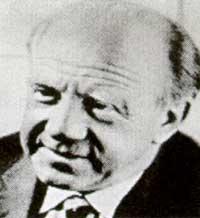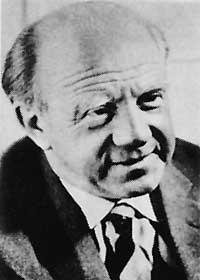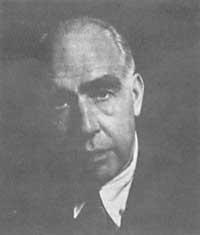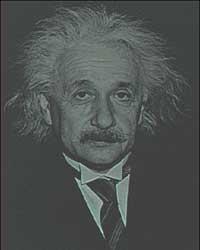Heisenberg, Werner
1995/08/02 Azkune Mendia, Iñaki - Elhuyar Fundazioa | Kaltzada, Pili - Elhuyar Zientziaren Komunikazioa
(1901-1976)

This German physicist joined the world of Würzburg in 1901. Although from a young age his father encouraged him to the humanities, he immediately highlighted his tendency to physics and chemistry. At the age of twenty-two he earned a doctorate in physics at the University of Munich. He had as professors Sommerfeld and Bohr and had the opportunity to know the theories of both researchers. Bohr investigated the internal structure of the atom to determine the position of spectrum lines. Heisenberg, however, believed that these lines are only in the imagination, so he focused on observing reality as the main line of research.
He did not completely rule out the study of spectral lines. On the contrary, it focused mainly on the mathematical model that can explain these lines. In 1927 he proposed the matrix mechanics for this, but a few months later the equation of the wave mechanics that the Austrian Schrodinger had launched was more echo than the Heisenberg model.
In 1927 he postulated the principle of uncertainty, one of the pillars of quantum mechanics. This means that the position and timing of a particle cannot be known at once with complete certainty. To know exactly where the particle is, the observer must get the particle to interact with a small wavelength photon, but as this is a high energy photon, the interaction increases the speed of the particle. However, the use of small energy photons reduces position accuracy due to the longer wavelength of the photon.
The principle of uncertainty gave Heisenberg fame and in 1932 he received the Nobel Prize in Physics.
During World War II, the German government left in the hands of Heisenberg the study of the atomic bomb. However, the war ended before the examinations ended and Heisenberg settled in western Germany, being director of the Max Planck Institute in Gottingen. In 1955 he wrote a book entitled The Image of Nature in Current Physics.
He died in Munich at the age of 75.

Gai honi buruzko eduki gehiago
Elhuyarrek garatutako teknologia






